
Many of you no doubt remember 24, the Fox television series starring Kiefer Sutherland as Jack Bauer, the tortured (emotionally and physically) counter-terrorist agent who repeatedly thwarts attacks on American soil. In its heyday the show inspired rabid fandom; I should know, because I was one of the die-hards. As a “just-for-fun” summer project during my BYU years, some friends and I made an homage-parody entitled 29, about a group of college students whose race to make it home on time to watch the 24 season finale is fraught with peril (watch the film here).
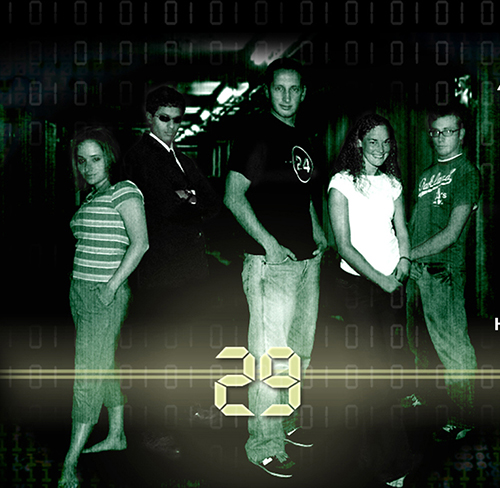

The 29-minute film was low-budget, but the script was (in my opinion) fast-paced and funny and we had a great time with the action scenes. We premiered the movie outdoors for about 80 people (friends and family), gave out DVD’s, and thought that would be the end of it. Little did we know that 29 would be the beginning of something that launched the film careers of several people and drew one of the world’s biggest stars into its net. I’m referring to something you may not know about: quintessential nice guy Donny Osmond once played a terrorist. But we’ll get to that in a moment.
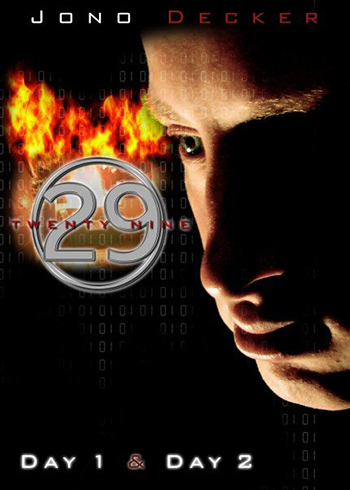

The next year my friend and roommate Alan Seawright pitched an idea to me for a sequel. Between working full time, attending college, and performing with the popular BYU humor group Divine Comedy, I couldn’t commit to writing or directing again, so Alan offered himself up for the job. This would be his first time directing a movie, but his idea and script were solid, so I dove in.
29: Day Two was altogether more polished and cinematic than the first film (watch it here), and I knew that my friend had natural talent. We premiered the film as a double-feature with the first 29 in the Joseph Smith Building auditorium on BYU campus. Working hard to promote it we got some 900 people to attend and fill up the building. It was a huge night for the handful of college kids involved.
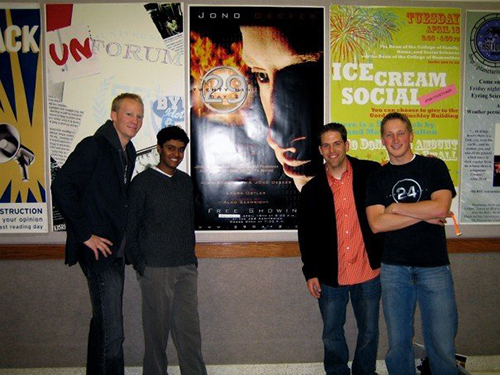

I pursued a career as a marriage and family therapist, but Alan was bit by the bug. He was going to be a filmmaker. For his first feature-length film, he recruited me for CTU: Provo, an independent action-comedy inspired by the 29 films, but altogether its own animal. CTU’ stands for Counter Terrorist Unit, and the film took for its premise that there’s a CTU office in the city of Provo. There the most inexperienced and underqualified agents get dumped because “no one’s ever going to attack Provo.” Then, of course, someone does.
Alan and I play ourselves (it’s meta, just go with it), two 24 fans who think the fictional TV show has given them all the preparation they need in order to fight actual terrorists, and of course we get in way over our heads. So how does Donny Osmond factor into all of this? Naturally, he’s the criminal mastermind.
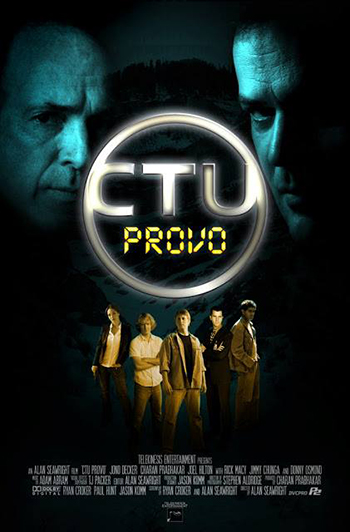

The film, which premiered online after a film-festival run, is having a 5th anniversary screening at this week’s Salt Lake Comic-Con, Thursday September 5th from 2-3:30 p.m. I recently had the chance to catch up with my old friend and reminisce about the film, working with Donny Osmond, and how he’s managed to have a successful career as a filmmaker, on his own terms, outside of Hollywood.
JONATHAN DECKER: Great to be talking with you pal. It’s pretty wild that five whole years have passed since we released this flick. What inspired you to become a filmmaker? Is it what you always wanted, or did you have other plans?
ALAN SEAWRIGHT: 5 years? How old are we now? I’ve wanted to be a filmmaker since seeing Jurassic Park as a 1 -year-old. That was really the first movie I was aware of and excited about before it came out, and it certainly didn’t disappoint. I didn’t really pursue it as a career though, until that fateful day in late 2005 when you told me you liked my idea for 29 Day 2, and that you didn’t have time to direct it, so I should.
JD: That’s right. I didn’t initially think I wanted to do a sequel, but your idea was pretty great. There really is nothing more fun, for me at least, than making a movie with your friends just for kicks. Of course you did all the heavy lifting for that, especially in the weeks leading to the BYU double-feature premiere. What was it about filming in the freezing snow, slaving away in front of a computer for days editing, and showing up at your own movie premiere visibly sleep-deprived (and dare I say malnourished?) that made you say “Yep. This is what I want to do for a career”? Or am I overlooking something about the experience?
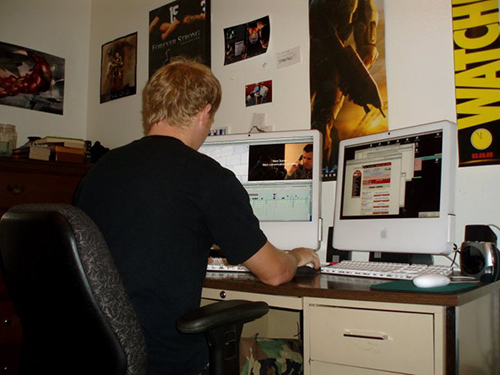

AS: Thanks man. It’s not hard at all to figure out what it was about that experience that made me want to do that for a living. After those crazy hours, the lack of sleep, the tough shooting conditions (we broke so many rules, never shoot at night, don’t shoot at sunset, in the snow, etc…) I simply enjoyed all of it. But the high of having something that I made screen in front of hundreds of people, who laughed at (most of) the jokes, and got quiet at the right moments of tension… it was unbelievable! So I get to have fun most of the time, do crazy things that most people don’t get to do, and at the end of it, I get to have fans? No question.
JD: So the next year we had the idea for a 29 prequel (called 29 Begins) that found my character and your character teaming up to thwart an actual terrorist plot on Provo, Utah. How did that gestate from a low-budget short film into a feature-length independent movie that launched the film careers of several people?
AS: So 29 Begins turned into CTU: Provo because, um.
.. I don’t think anybody wanted to do another 29 movie except you and me J Also, it just made more sense to make something that would be approachable to a wider audience than just our friends and the students we’d managed to con into going to the original 29 double-feature screening.
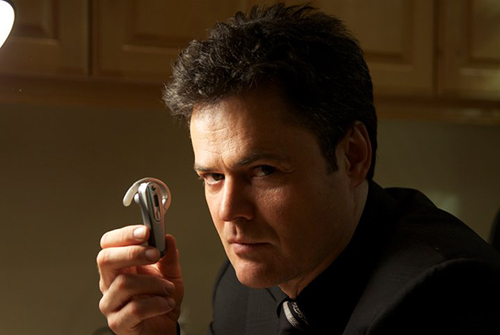

JD: Con? Con?! I prefer charmed. Now, most people that I know are morbidly curious to know what their favorite celebrities are like in real life. We want to know if they’re narcissistic prima donnas or if they’re humble and kind. We got Donny Osmond to play a criminal mastermind, popping up throughout the movie to berate his incompetent henchmen. What can you tell people about how we convinced one of the biggest stars in the world to join our cast, and what is he like in person?
AS: Donny, Donny, Donny. We were able to convince Donny to shoot for an afternoon (actually, only about 2 hours) because one of our producers, Charan Prabhakar, is without shame. He literally doesn’t have the filter that most people have that says, “I shouldn’t ask this famous person to be in my tiny, tiny student film, cause you know, weird.” Also doesn’t hurt that he grew up with Donny’s son Don, and they’ve been friends for years.
Donny was an absolute joy to work with. This is not the political, let’s-be-nice-so-we-can-get-more-work answer. Donny is hilarious, we had a lot of fun, and he was a pro. We actually shot his scenes almost two months before the rest of the movie, due to scheduling stuff, and it was so easy and fun, we thought, “Great, making an entire feature film will be a breeze!” Ha!
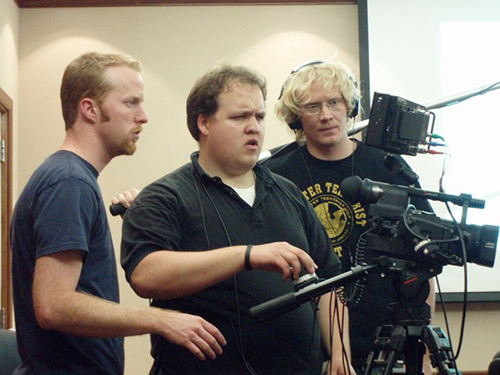

JD: CTU: Provo was your first feature-length directing gig, and the second project you’d ever made. You’ve matured a lot as a filmmaker since then, to the point that it almost seems like the film was your career boot camp. What were the greatest lessons you learned on this movie? What aspects of the film are you most satisfied and pleased with today? What would you do better if you knew then what you know now?
AS: CTU: Provo was definitely my film-school. Most of the lessons I learned were kinda negative things, because we just jumped in and made a movie without really thinking about it. At all. Trying to narrow down the greatest lessons is hard. The most relevant lesson is the one that is currently relevant in whatever I’m working on right now. Though if I had to pick one, I would say, approaching storytelling without fear. There’s a lot of pressure on a film, where you’re spending other people’s money, and lots of it, usually, to not make mistakes. Not making mistakes is a great way to make things that are boring and uninspiring. Creativity requires failure.
Gauging what I could do better is sort of sad. The correct answer is hopefully, “everything,” because I made that movie with almost no experience, and we were just kinda winging it the whole time. Likewise, there’s basically nothing in the film I’m satisfied with, though I’m pleased by basically the whole thing. There are definitely sections that make me cringe, but for the most part, it’s just a lot of great memories of spending time with my friends, before we all had to go get jobs and contribute to society!
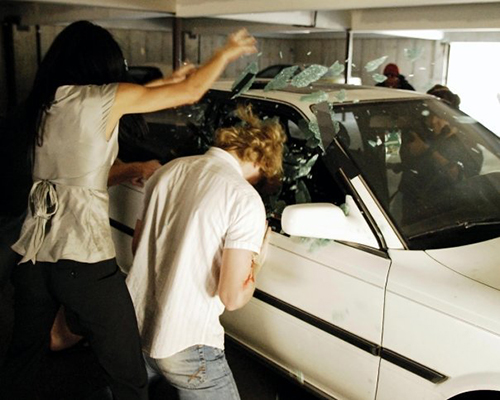

JD: In the two films I’ve done with you, by far my favorite thing to shoot have been the action scenes. I look back now, as a married father, at some of the stuff we did and it seems really stupid and crazy. What were we thinking? Really, no one reading this should imitate us. We seemed to be trying to out-stunt each other. I got yanked down a flight of concrete stairs so you had your head smashed through a panel of safety glass. I mean, yeah, on those two we employed some movie tricks to minimize danger, but the other stuff we couldn’t cheat on.
I swung over the street on the door of a van going 40 mph, you threw yourself down a frozen mountainside wearing only a t-shirt and jeans, and I jumped about 12 feet down (off a wall, over a railing, and into an alleyway) while pursuing a villain. We saved that one for my last shot of production, you remember? If I broke an ankle I wanted to have all of my other scenes shot beforehand. You won, though. The craziest stunt by far was when you allowed yourself to be hit by a car, which, I might add, was midway through shooting, not at the end like my biggest stunt. Why did we do it when we did? How did you prepare for that?
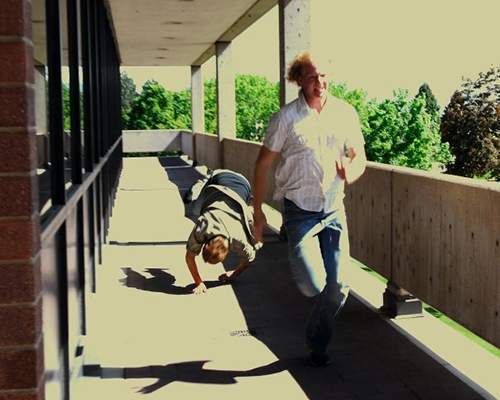

AS: Yes, we are really dumb. To be fair, I would still happily do all those stunts again, but we’d take more safety precautions, and we’d have loads of production insurance. Which is actually why we did the car stunt the day we did. I was still on my parent’s insurance through the end of May that year, so on May 31st, we went out and shot that, just in case I was hospitalized.
As far as preparing for it, ummm. I watched a lot of movies, and stunt featurettes on DVDs then just guessed. We did a practice run that helped us figure out we needed the driver to slam on the brakes right before I got hit, to lessen the impact. Of course we figured that out because the practice run consisted of me just bouncing off a 3,500 lb car that didn’t slow down. But you had to do an onscreen kiss with a married woman (Laurel Armstrong, as Moon Meadow) which had you freaking out pretty badly if I recall. That’s right up there in extremity.


JD: I don’t think I was freaking out! But yes, that was my first (and only) screen kiss, and she and her husband are my friends, so it was a tad weird.
Now, CTU: Provo saw the launch of Telekinesis Entertainment, the production company you run with our mutual friend Daren Smith. What has Telekinesis done and become in the time since?
AS: Since 2008, Telekinesis Entertainment has produced a lot of corporate videos, a few commercials, some short films, and a couple music videos. It’s very much a general purpose production and post-production (editing, visual FX and sound FX) company. We have big plans though! A feature is on the way in the next 1-2 years, and a TV series (that we’ll likely release on the web, so that we control distribution, and content!)
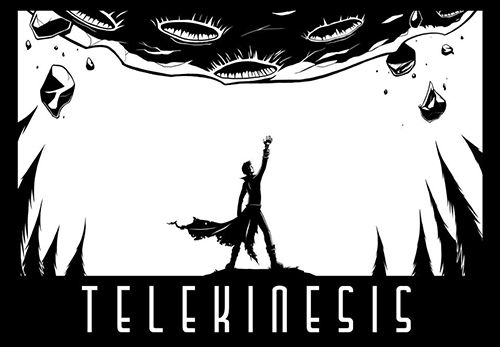

JD: One of the projects you worked on was Cosmo: The Quest (watch it here), a series of action shorts that played at the BYU football games. How did you land that gig? What were the most challenging and rewarding parts of that project?
AS: Cosmo: The Quest almost dropped in my lap. Just a few weeks after finishing CTU: Provo I got a call from BYU Athletics Marketing. They’d watched the movie, and wanted something similar for that year’s Cosmo movie. The most challenging part was making a movie that was exciting and entertaining, but still appropriate for four-year-olds. The most rewarding part of course was going to the football games and seeing the entire stadium of 65,000 people quiet down to watch my movie, and erupt in cheers at all the right places! Took that audience of a couple hundred [at the 29 double-feature premiere] up a couple orders of magnitude! Also amazing: going anywhere with Cosmo. Might as well be with the President! You can get in anywhere, and do anything you want!
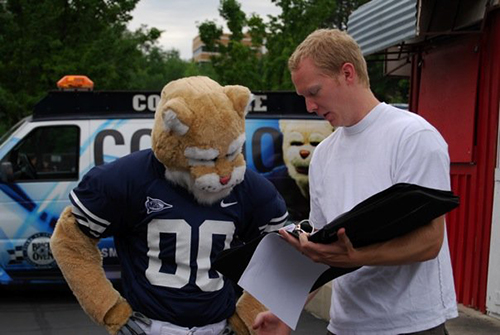

JD: Your lead actor was Matt Meese, who’s well-known for his work with Divine Comedy and now Studio C on BYU-TV. You also had Rick Macy, well known as Helam in The Testaments and Joseph Smith Sr in The Restoration, as the villain. What can you tell our readers about working with them?
AS: Rick is an old friend, and my former acting coach, so it’s just like working with…well…my good friend. Matt’s a nice guy, really funny. The biggest thing was, they both bought into the idea of making a live-action Saturday morning cartoon, and really went for it. Just watch the performances, they cranked everything up to eleven.
JD: Since then you guys have done some really fantastic stuff, from a music video for Tiffany Alvord to a…ahem…biting Twilight parody, from a spot-on (and very funny) send-up of cliched pizza commercials to the great viral vid “Communism: The Board Game.” My personal favorite has to be the version of Justin Beiber’s “Baby” performed by your then-infant son, Jack. You spliced together a bunch of baby noises that he actually made and set them to music. It’s pretty phenomenal and totally adorable. Tell us about the process of putting that together.
AS: Creating “Baby baby” was actually just a lot of editing and sound mixing. Like, a lot. I shot about 2 hours of footage of my son, who is very talkative (it’s only gotten worse now that he knows words) and we cut together beats of him making sounds in the right cadence. Then Daren (my business partner, and a wizard with audio editing and mixing) took all of those sounds, and pitch-shifted them, and changed the dynamics to make it sound like the song. He actually got it so close that when we uploaded it to YouTube, their copyright detection algorithm mistakenly thought we’d just uploaded Bieber’s original. Took a while to get that straightened out!
JD: Your short film “Flashback Fight” is one of the most creative action shorts I’ve ever seen. It very cleverly plays with a nonlinear structure that has audiences putting the pieces together as they go. Though it’s a “PG-13” level mini-movie (for the intensity of the action) you break it up with some nice bits of humor so people don’t take it too seriously. How did you guys do the visual effect where the environment shakes and trembles around the actors? Can you even describe it to the average person? And how in the world did you pull off the seamless shot where you fall over the ledge and the camera pans down to you at the bottom?


AS: Thank you, it was very fun to make! I actually work as a freelance visual effects (VFX) artist in addition to editing, directing and writing. The VFX in Flashback Fight are actually quite rudimentary, but still, MOVIE MAGIC!
The environment shaking was pretty simple, I just rotoscoped out the character (essentially, traced around frame-by-frame to remove them from the shot) then laid them over a copy of the background that I then wrote a really simple script to shake around. Glad you liked it!
The shot where I fall over the ledge was also really simple. We filmed Daren swinging wildly at nothing, then ran the camera up to look over to where I was already laying on the ground.We did a separate shot (on a different day, actually) of me swinging the wrench at him in front of a green-screen. We also set up a little temporary wall (also with green in front of it) for me to fall behind.Then I simply cut myself out, put myself into Daren’s shot, animated some shadows, etc.
.. The shot took about 10 hours to do start-to-finish once I had the footage, which in VFX is actually super-fast turnaround. Not because I’m particularly talented, it was just a pretty simple shot!


JD: Your short film “Warm Case” won this year’s 24-hour film festival in Orem, in which participants are given a theme and have 24 hours to conceptualize, write, film, and edit a short film based on that theme. What can you tell us about the film and the challenging experience of working within that time frame?
AS: Warm Case was just a lot of fun, as you would expect when detailing the murder of Frosty the Snowman in the style of a CSI procedural show. I almost felt like we cheated actually in winning, we had a 5-person team, and each of us is a professional with several years’ experience. A 24-hour challenge is exhausting to do, but really, it’s just a great way to spend a weekend with some friends. Also, it’s a good way to force yourself to just make something.
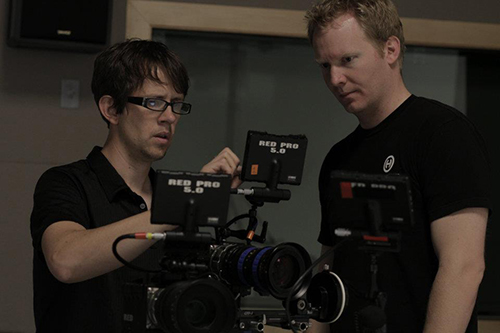

JD: You directed a commercial I wrote this year for “How to Avoid Falling in Love with a Jerk or Jerkette,” a singles’ class offered statewide through Utah State University. Everyone there was exceptionally pleased with Telekinesis’ work. It’s had a nice long run with the previews at Megaplex Theaters. What was it like seeing your work on the big screen in a theater full of people?
AS: The first time I saw the “How Not to Date a Jerk” commercial in the theater was actually at a screening of Iron Man 3 that I went to with the guys at the VFX company I’ve been working for. It was opening weekend, and there were probably 250-300 people in the theater. As soon as it came on I just blurted out, loudly, “I directed this!” The shame prevented me from enjoying the audience reaction. 😉 Again, getting to watch people enjoying something I’ve made is the reason I do this. I crave approval!
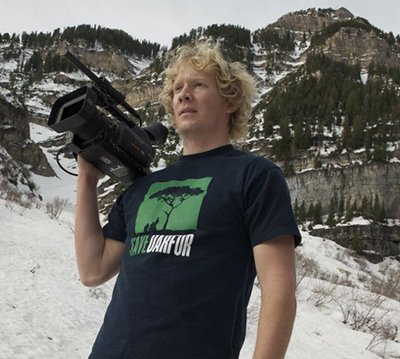

JD: You’ve opted to work in Utah as opposed to moving to Hollywood. It seems like a few years ago your choices were either to work with the LDS Motion Picture Studio, work on Mormon “green Jell-O comedies,” or find something small to do whenever Hollywood rolled into the state, but now there seem to be more opportunities. Is the Utah movie industry growing? What advice would you give those who are trying to make a living here as a film-maker?
AS: The industry is certainly moving along here nicely. There is a fairly steady amount of on-set work on larger productions, and there’s a huge growth in demand for filmed content for the web and devices, (smartphones, iPads, etc.). The best piece of advice for anybody trying to make a living in film comes in two parts.
– 1) Make things all the time. Even when you’re not getting paid, just make stuff, improve your craft, learn a new tool, tell a new story.
-2) Be a good person. Just being a decent human being that is nice to work with, instead of a screaming, demanding, auteur will get you hired. Be good at your job, yes, but also be nice to work with while at your job. We work long hours in the film industry, and everything is a matter of opinion. The good news is, we’re not curing cancer, so no matter how right you think you are, it’s actually not that important!
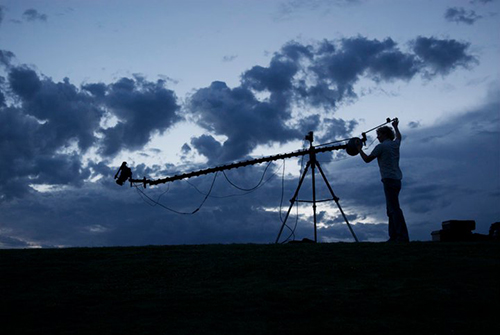

CTU: Provo is having a 5th anniversary screening at the Salt Lake Comic-Con, Thursday September 5 from 2-3:30 p.m. For more information, please click here.
For more on Alan Seawright and Telekinesis Entertainment, please visit the production company’s web site and YouTube page
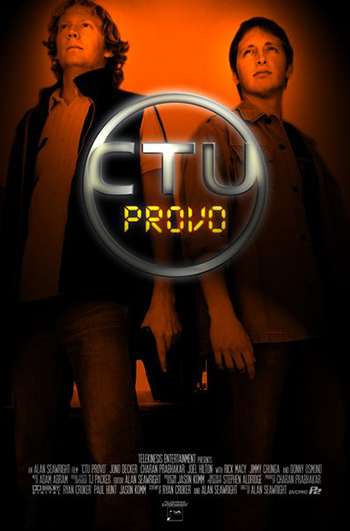

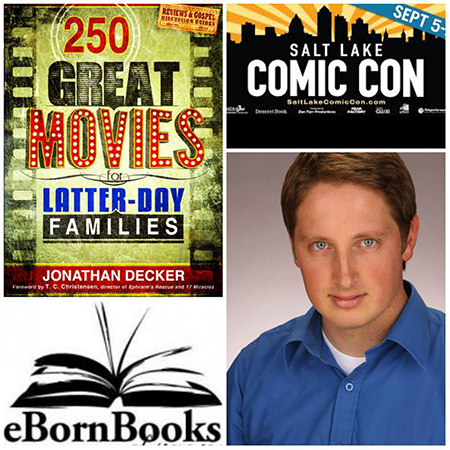



















Jonathan DeckerSeptember 3, 2013
Oops. Haha. Alan was twelve or thirteen when Jurassic Park came out, not 1. I believe that typo was my error.